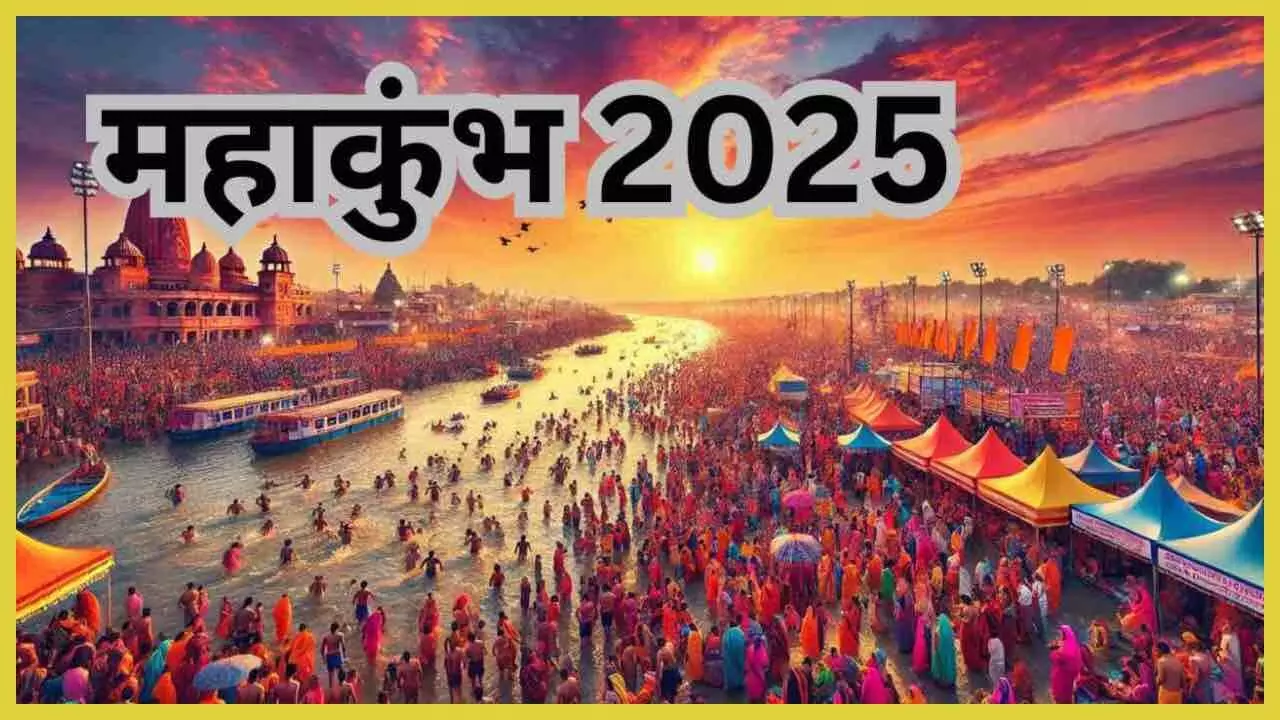TRENDING TAGS :
Maha Kumbh 2025: Playing the Games of Excess
An insightful commentary on the extreme excesses witnessed during the Prayagraj Maha Kumbh, from exaggerated claims to chaotic crowds.
Prayagraj Maha Kumbh 2025 Playing the Games of Excess
Maha Kumbh 2025: Acharya Chanakya once said, “Ati Sarvatra Varjayet,” meaning excess should be avoided everywhere. Excess means going beyond necessity, crossing the limits—because once excess happens, disorder is inevitable. However, like many proverbs and wise sayings, hardly anyone follows “Ati Sarvatra Varjayet,” and we saw a perfect example of this at the Prayagraj Maha Kumbh this time. Such an extreme level of excess has rarely been witnessed in any event.
It all began with an excess of claims. So many exaggerated claims were made about the arrangements, it was shown as a once-in-a-lifetime opportunity.
It is estimated that the total population of Prayagraj is around two million, and even with these numbers, this ancient city often seems to struggle. But since this was the Maha Kumbh, a crowd of multi-millions was inevitable. However, the administration claimed preparations for 1000 million people.
According to the government, the total number of people who visited the Maha Kumbh has now been established at more than 650 million. So, to say, the arrangements surpassed the actual visitors by a long way.
The Kumbh Mela has been happening since time immemorial. But this time, the publicity was staggeringly overdone—on social media, newspapers, TV, hoardings—everywhere, it was just Kumbh, Kumbh, and more Kumbh. The excess of promotion turned Kumbh into a “Maha Kumbh.”
Such was the excess of claims that people also went into overdrive in thronging to Prayagraj. Since everyone wanted to reach there, hordes and hordes of people besieged all available trains. Distances, differences, and class barriers—all vanished. With or without tickets, people crammed into every coach. Even the engine and guard compartments were not spared. AC coaches turned into general compartments, and the situation became so chaotic that people broke windows and doors to get in. Indian Railways may have never witnessed such an excess.
Playing the Games of Excess (PC- Social Media)
The way crowds broke into AC compartments, occupied seats, and set new trends of mob behavior, it is uncertain whether this will become a future norm. The saying “getting a taste for blood” now seems terrifyingly real. But it wasn’t just trains—there was also an excess of traffic jams and disorder on the roads. Traffic jams stretching for dozens of kilometers—something never seen or heard of before—became the new normal.
At the Kumbh Mela grounds and the Sangam banks, the excess of crowds led to several deaths and injuries. And this despite excessive claims of AI surveillance, drones, cameras, and security forces ensuring “hyper-security.” As the Maha Kumbh progressed, the administration seemed to lose control, leading to an excessive deployment of officials. So many officers were stationed that it surpassed all previous records. With new postings every day, a question naturally arises—were the previously assigned officials incompetent? Was deploying ten officers in place of one meant to increase efficiency, or was it a way to cover up inefficiency? Which officer were the staff members supposed to listen to? Or were they listening to no one at all? You can decide for yourself.
The wave of devotion was so overwhelming that even VIP bathing saw excesses. Every day, a timetable was issued detailing which VIPs would take the Amrit bath. From businessmen and film stars to ministers, politicians, and governors—everyone was seen bathing and getting photographed. When there was an excess of VVIPs, VIPs were bound to follow. Even if they couldn’t get separate roads, their families, relatives, and friends had unrestricted movement. As for the general public, they simply followed the crowd as a herd of sheep’s philosophy.
The excess extended to accommodations as well—₹90,000 per night tents! Domestic flight fares to Prayagraj soared to ₹50,000! The faith-driven event turned into a luxurious retreat for the wealthy and a VIP hospitality spectacle. Kumbh became less of a pilgrimage and more of a tourist attraction and a grand event. Even non-VIPs indulged in excesses—whether you call it exploitation or business opportunity, local residents started charging ₹2,000–₹3,000 for short bike rides. This was an excess of “opportunity in faith.”
Social media saw an excess of reels. Kumbh turned into a selfie hotspot. It went to the extent that photos and videos of bathing women were captured and sold online. The filth was not just mental—excessive pollution was visible on riverbanks and even in the river itself. The Pollution Control Board, in its report to the National Green Tribunal, claimed that the waters of the Ganga, Yamuna, and Sangam in Prayagraj were heavily polluted. Meanwhile, the government was excessively focused on proving it wrong.
Even statements were excessive—be it from politicians or saints. Instead of guiding devotees toward spirituality, saints and mahants were busy making political statements and slogans. Politicians, on the other hand, contaminated the sacredness of the Kumbh with absurd adjectives.
Kumbh has always been a place of curiosity for different kinds of saints and sages. But this time, traditional ascetics took a backseat, and figures like IIT Baba and Mala-wali Monalisa dominated the publicity. It seemed as though they were the true protagonists of Kumbh.
In this Maha Kumbh, everyone went to extremes—the government, organizers, devotees, officials, saints, and vendors. Everyone seemed eager to shine and be in the spotlight. There was an excess of seeking virtue, an excess of washing away sins. The people of Prayagraj experienced an excess of house arrest.
The explosion of devotional excess wasn’t confined to Kumbh or Prayagraj alone. It spread equally across Varanasi, Chitrakoot, and Ayodhya. Crowds were everywhere. Everyone seemed intoxicated with “144-year-old faith.” The excess was that no one even questioned where this “144-year-old tradition” claim came from.
Regardless of complaints and observations, one thing is certain—this was extraordinary. Such a spectacle had never been seen before. It is now evident that a new benchmark has been set. The question is—what next? Many more events will take place in the future. Year after year, such occasions will continue. People have learned, experimented, and observed a lot. The real curiosity lies in—what will be the next level? What form will it take? It will be interesting to see.


